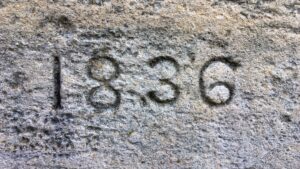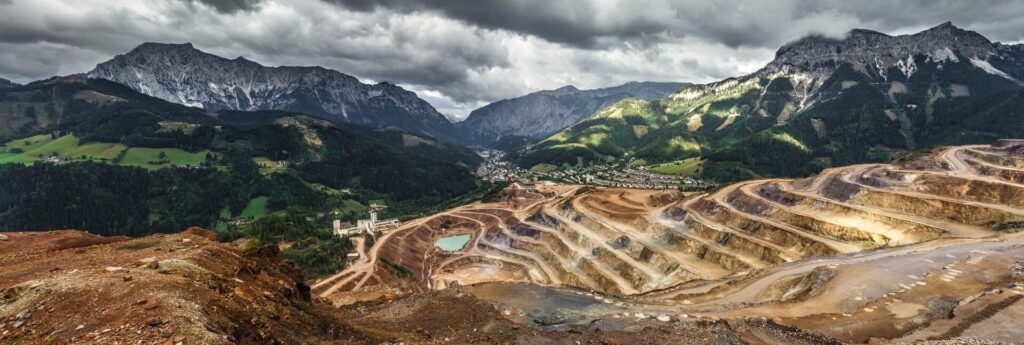The Evolution of Mineral Rights

Mineral rights have a complex and chequered history that goes back to the dawn of human civilization. The whole concept of mineral rights has gone through some changes over the years. Changing societies and economies have helped the evolution of mineral rights, along with emerging new technologies and developments in mineral production.
We’re about to examine the key events and milestones that have helped to shape things so that we can clarify some of the confusion around the history of mineral rights.
Ancient Civilizations and the Earliest Forms of Mineral Rights
The idea of mineral rights and their earliest forms have been traced back to civilizations in Ancient Greece, Rome, and Egypt. It was part of their culture to use mineral resources for trade, weapons, and tools.
The first controllers of mineral rights were typically rulers and elite members of society. There was little protection for common people and their rights.
When the Roman Empire first came about, the landowner or property owner retained the rights to extract minerals. Mineral resources were deemed to be the “fruit of the soil” and as such, the mineral owner was the person who owned the land.
The Development of Mining and Mineral Rights in Medieval Europe
Things changed yet again during the Middle Ages. At this time, land and mineral rights were closely connected to power and wealth. The people in these lofty positions tended to be monarchs and feudal lords.
Medieval Europe experienced significant growth in the form of new towns and cities. These developments were closely linked to a new class of traders and merchants. It was these tradespeople who wanted to get control of mineral resources and be the mineral owner.
Coupled with the rise of the merchant class was a decline in feudalism. This in turn led to the development of a more formal mineral rights system.
Around the 1600s, known as the colonial times, ownership of mineral rights over American soil was not reserved by the British Crown. Instead, ownership of property fell under English common law.
The Rise of Industrialization and Modern Mineral Rights
During the 18th and 19th centuries, the Industrial Revolution brought about several changes to the system of land and mineral rights.
Industrial growth at this time meant there was an increased demand for mineral resources. To help meet this demand, new technologies were developed for exploring, extracting, and processing various vital minerals.
Ultimately, this meant that mining companies became very powerful and a new division of industrial capitalists came about.
Mineral Rights Events in the Early 1800s
The Battle of San Jacinto, Mexico took place around 1836. Afterward, a newly formed Republic of Texas took control. Within a few short years, by 1840, Texas had adopted property rights akin to English common law.
These property rights included the right of ownership of mineral deposits and thereby mineral rights. Mexico didn’t recognize these new laws and still considered itself the rightful mineral rights owner. The country continued to mine salt and sell it.
Another important event that took place at this time was the completion of the first gas well. It was constructed in 1826 near Fredonia, New York by a guy named William Hart.
Mineral Rights in the 19th Century
A lot of significant changes were about to take place in the 19th Century. They started with the making of “kerosene”. A Canadian geologist by the name of Abraham Pineo Gesner refined a liquid from a combination of bitumen, oil shale, and coal. This liquid burned cleaner than any other oil so far and was also cheaper.
He called the new liquid kerosene and a couple of years later, in 1847, Abraham founded the Kerosene Gaslight Company. The oil he created was used to light the streets of Halifax, Nova Scotia where the company was located. It wasn’t long before it was being used in cities across the US.
In 1847, an important discovery was made that would shape the modern history of the oil and gas industry. A Scottish chemist, James Young, was in the Riddings coal mine where he witnessed a natural petroleum seepage. He distilled the seepage and created a light oil that was suitable for lamps along with a thicker oil that was perfect for lubrication.
A decade later, in 1857, the American Merrimac Company drilled the first oil well, to a depth of 280 feet. The well was in the town of La Brea, Trinidad.
An important piece of legislation was passed in 1858 by the Supreme Court of America. It ruled that mineral rights passed not to California from Mexico, but to the United States. Not long after this ruling was passed California landowners and property owners were granted mineral rights and the ruling was reversed.
A couple of years later, in 1859, Edwin L Drake drilled the first commercial well at Titusville, Pennsylvania. The liquid that flowed from this well was crude oil.
Fast forward a few more years to 1888 and New Mexico’s Supreme Court canceled a Mexican land grant. The reason was that mineral rights had not been conveyed. The court subsequently reversed its decision in 1903. It granted mineral rights to the property owner.
However, this situation was not repeated across the United States. Some states had to wait several more years before the law relating to mineral rights was changed. For example, in Arizona, private landowners had to wait for their mineral rights until 1925. Up until that date, prospecting was permitted on private land by the general public, as long as they paid for any damage that they’d created. WE
The General Mining Act of 1872 is a US federal law that not only governs but also authorizes mining and prospecting for economic minerals. These include silver, platinum, and gold, on federal public lands. Once this law was passed it codified the former informal system relating to the acquisition and protection of mining claims on public land. The informal system was formed by prospectors in Nevada and California between 1840 and 1860. These prospectors were very busy during the California Gold Rush.
According to the 1872 mining law, any US citizen over the age of 18 has the right to locate a lode (hard rock) or placer (gravel) mining claim located on federal lands open to mineral entry. Locatable minerals include tungsten, uranium, zinc, lead, copper, silver, gold, and several others.
Another crucial piece of legislation was the Stockraising Homestead Act, 43 USC Section 299 which was passed in 1916. Up until then, mineral rights to public lands were only reserved for the US government in part. It included specific minerals or no mineral rights as all were reserved.
The Impact Social and Environmental Movements Have Had on Mineral Rights in the 20th Century
Mineral rights continued to evolve in the 20th century. This is a time in human history when traditional notions of mineral rights and the surface rights owner were being challenged as a result of the rise of social and environmental movements.
Greater protection of the environment was being called for, along with better protection for local communities affected by mining operations in their area.
The result of these demands has been the introduction of new laws, policies, and regulations. They aim to balance the economic benefits of mineral exploration and extraction with the protection of local community rights and the environment.
Let’s take a look at some of the legislation that has passed during this part of the history of mineral rights:
- Texas statutes implemented in 1907: These declared that property owners could sell any mineral rights along with a property
- Retroactive law passed in 1912 by the Texas Supreme Court: It returned surface and mineral rights to property owners. This included those the government had retained.
- The Relinquishment Act of 1919: This act made the surface owner or mineral interest owner an agent of the state and relinquished the State’s oil and gas lease rights in the land while retaining a 1/16th oil and gas interest for the State for which royalty payments had to be made.
- The Mineral Leasing Act of 1920: This act permitted the Bureau of Land Management to issue leases for the development of sulfur, sodium, potash, phosphate, coal, and other minerals under public domain lands that had federally reserved minerals. In addition, it also prohibited alien lease ownership unless via corporate stock ownership. Payment of yearly rentals and production royalties had to be made to the United States.
Within almost three decades, almost 54 million acres of Texas land became the subject of oil and gas lease. Since the mid-1950s, royalties have been slowly increasing.
Current Trends and Future Prospects for Mineral Rights
So, what does the future hold for surface rights and mineral rights?
Community mining and shared resource management are just a couple of the new approaches to mineral rights and surface rights that are coming about. These developments are a result of the growing awareness of the importance of responsible resource management and sustainability when it comes to mineral production.
Any future decisions made about surface rights and mineral rights will likely be influenced by technological advances and the development of political and global economic conditions. Also very influential will be the ongoing efforts being made to balance social responsibility and environmental protection with economic development.
Conclusion
What will happen in the future is anyone’s guess. Surface rights, mineral rights, and property rights are very much in the hands of lawmakers. The path is not likely to be a straightforward one wherever you are in the world.
FAQs
1. When was the first oil well developed?
The first oil well was drilled in La Brea, Trinidad in 1857. The American Merrimac Company drilled to a depth of 280 feet.
2. Who drilled the first oil well in America?
The first American oil well was drilled by Edwin Drake in 1859. It was the first commercial oil well and was located along the banks of Oil Creek.






